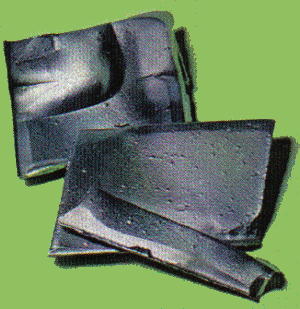 SKC Films Library |
| SKC Films Library >> Chemical Elements |
| Nickel (Ni) a white metallic chemical element often used in alloys
The name nickel comes from the German kupfernickel, or false copper, a reddish ore containing nickel but no copper. Chemical Properties atomic number 28 melting point ~1,455°
C specific gravity 8.9 Nickel is magnetic, takes a high polish, and does not tarnish easily or rust. It can be hammered into thin sheets or drawn into wires. One pound of pure nickel can be drawn into a wire 80 miles long. Occurence and Sources Nickel ranks about 22nd in natural abundance among elements in crustal rock. The chief mineral ore of nickel is pentlandite, a mixture of sulfur, iron, and nickel. Other nickel ores include millerite and niccolite. Sulfide ores are usually smelted in a blast furnace and shipped in the form of a matte of copper and nickel sulfide to refineries, where the nickel is removed by various processes. Canada is the world's leading producer of nickel, with about a fourth of the world's supply coming from the Sudbury District of Ontario. Australia, Cuba, New Caledonia, and Russia are also important nickel-producing areas. Uses Nickel is used in structural work and electroplating chiefly because of its resistance to corrosion. Perhaps the largest use for nickel is as an additive to cast iron and steel. It improves the properties of these substances in many ways. It makes iron more ductile and increases its resistance to corrosion, and makes steel more resistant to impact. For this reason manufacturers frequently use steel alloyed with nickel to make armor plate and machine parts. Invar, an alloy of nickel, iron, and other metals, is valued for meter scales and pendulum rods because it expands or contracts very little as its temperature changes. Monel Metal is an alloy of copper and nickel used in sheet-metal work. Nickel Silver is a nickel alloy used in tableware. The U.S. five-cent piece, commonly known as a nickel, is made from an alloy of 75% copper and 25% nickel. Nickel is also a key component of nickel-cadmium batteries. History Nickel was used as coinage in nickel-copper alloys for several thousand years, but was not recognized as an elemental substance until 1751, when the Swedish chemist Axel Cronstedt isolated the metal from niccolite ore. SEE ALSO |
| SKC Films Library
>> Chemical Elements This page was last updated on 07/07/2018. |
